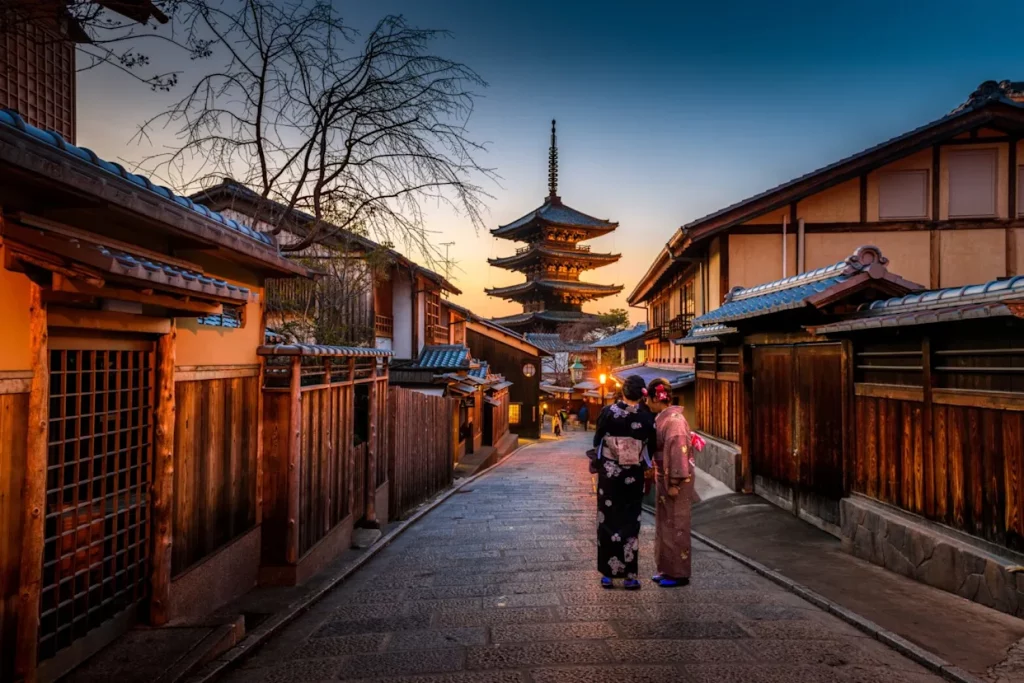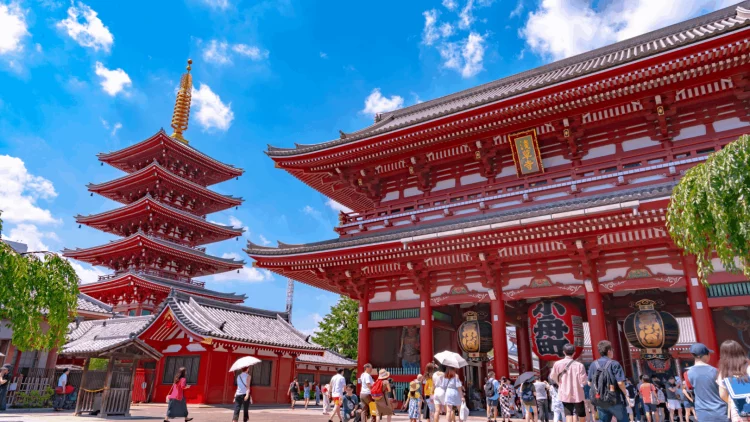Japan, with its rich history, stunning landscapes, and unique customs, is a country that draws millions of travelers each year. For many, the allure of Japan lies not just in its beautiful sights, but in the distinct cultural practices that permeate everyday life. To truly appreciate the country and its people, understanding Japanese etiquette is crucial. This article explores key cultural norms, offering practical advice for travelers on how to behave, interact, and engage with locals respectfully. It also provides insights into the nuances of Japanese culture that will help you avoid common faux pas and enhance your travel experience.
1. Introduction to Japanese Cultural Norms and Etiquette
Japanese culture is deeply rooted in respect, harmony, and social order. The foundation of Japanese etiquette is respect for others, and this manifests in nearly every aspect of life, from greetings to dining, and even in the ways people offer and receive gifts. Understanding the principles that guide behavior in Japan can make a big difference when navigating social situations.
Respect for others and humility are essential values that govern how individuals communicate, behave, and interact. In public spaces, personal space is highly valued, and people tend to keep their voices low to avoid disturbing others. These cultural traits reflect the broader societal emphasis on maintaining peaceful and considerate relationships.
2. Tips on Greeting, Dining, and Gift-Giving
Greeting Etiquette
One of the most iconic elements of Japanese etiquette is the bow. The act of bowing holds great significance and can vary in depth depending on the context. A slight bow is often used for casual greetings or when thanking someone for a small favor, while a deeper bow is reserved for more formal situations or to express deep gratitude. However, many Japanese people are aware that foreigners may not be familiar with bowing, so a simple handshake is also acceptable in most situations.
When greeting someone, it is also polite to address them with their last name followed by the honorific “san.” This is a sign of respect and formality. For example, if someone’s name is Tanaka, you would address them as “Tanaka-san.”
Dining Etiquette
Japanese dining etiquette can seem complex at first, but understanding a few basic rules will help you feel at ease. The first rule is that when sitting at a table, it is customary to bow slightly as a gesture of gratitude before eating. Saying “itadakimasu,” which translates to “I humbly receive,” is also a polite way to express appreciation for the meal. Similarly, after finishing your meal, saying “gochisousama deshita,” meaning “thank you for the meal,” is a way of showing gratitude to the cook.
Chopsticks play a major role in Japanese dining, and using them properly is important. Do not stick chopsticks upright into a bowl of rice, as this resembles a funeral ritual. Additionally, avoid passing food directly from one set of chopsticks to another, as this is symbolic of a funeral custom and is considered inauspicious. Also, never point with chopsticks, tap them on the edge of the bowl, or wave them around when speaking.
Sipping your soup directly from the bowl is perfectly acceptable, especially for dishes like miso soup. However, it’s important not to make slurping sounds when eating solid food. While slurping noodles, like ramen, is customary and a sign that you’re enjoying the meal, making noise with other foods can be seen as rude.
Gift-Giving Etiquette
Gift-giving is a central part of Japanese culture, and it is often done as a gesture of goodwill, thanks, or apology. When presenting a gift, always use both hands, as this conveys respect. The wrapping of the gift is just as important as the gift itself. Presentation is key, so take the time to carefully wrap your gift, even if it’s something small.
It is also customary to offer a gift modestly, without expecting anything in return. You may present the gift with a bow and a polite “sumimasen,” which means “excuse me,” to show humility.
Gift-giving is not just for special occasions; it is often done as a gesture of appreciation, especially after a visit or to express gratitude. In business contexts, gifts are frequently exchanged, and they reflect an understanding of the relationship between the giver and the recipient.
3. Understanding Regional Differences in Customs Across Japan
While Japan shares a set of core cultural values, there are distinct regional differences that influence etiquette. These regional variations can be seen in everything from language and accent to food preferences and social behavior.
Kyoto and Osaka: A Contrast in Formality
In the Kansai region, which includes cities like Kyoto and Osaka, there is a noticeable difference in communication styles. Kyoto, known for its traditional culture, is more formal in its etiquette, particularly when it comes to addressing others with politeness and respect. On the other hand, Osaka has a more relaxed and friendly atmosphere. The people of Osaka are known for their humor and lighthearted approach to life. While the basics of etiquette remain the same, you may find that Osakans are less formal and more likely to engage in friendly banter.
Hokkaido: Hospitality and Warmth
The people of Hokkaido, Japan’s northernmost island, are known for their warmth and hospitality, especially during the cold winter months. It is common for locals to offer travelers a hearty meal and a warm place to stay. Despite this friendliness, the basic principles of Japanese etiquette still apply, such as bowing during greetings and expressing gratitude for any hospitality received.

Okinawa: A Blend of Traditions
In Okinawa, the southernmost region of Japan, there is a unique blend of Japanese customs and indigenous Okinawan traditions. The people of Okinawa are known for their relaxed attitude and strong sense of community. When visiting Okinawa, you may notice a more casual approach to etiquette, but respect for elders and traditions is still deeply valued.
4. How to Navigate Cultural Misunderstandings Gracefully
Despite your best efforts, cultural misunderstandings can happen, especially when traveling in a country with such a different social structure. When these situations arise, it’s important to handle them with grace and humility.
Apologize Sincerely
If you make a mistake or unintentionally offend someone, the best approach is to apologize sincerely. The Japanese have a strong culture of apology, and offering a heartfelt “sumimasen” (excuse me) or “gomen nasai” (I’m sorry) can go a long way in diffusing any awkwardness.
Be Mindful of Non-Verbal Communication
Non-verbal cues are incredibly important in Japanese culture. While someone may not directly tell you that you’ve made a mistake, their body language or tone of voice can provide hints. Pay attention to subtle signs of discomfort or disapproval, such as a lowered gaze or a stiff posture, and adjust your behavior accordingly.
Avoid Confrontation
In Japan, confrontation is generally avoided, especially in public. If you find yourself in a situation where a misunderstanding has occurred, it’s important to remain calm and composed. Keep your voice down and avoid raising your emotions, as this may be seen as disruptive or disrespectful. Japanese people value harmony and prefer resolving issues quietly and respectfully.
5. Practical Tips for Travelers to Connect More Deeply with Locals
While following etiquette is crucial for making a good impression, building deeper connections with locals requires a bit more effort. Here are a few practical tips for travelers looking to connect meaningfully with Japanese people:
Learn Basic Japanese Phrases
Even if you don’t become fluent in Japanese, learning a few key phrases can go a long way in showing your respect for the culture. Phrases like “arigatou” (thank you), “sumimasen” (excuse me), and “onegai shimasu” (please) are always appreciated and can help you navigate day-to-day interactions.
Participate in Local Customs
If invited to participate in a local custom, such as a tea ceremony or a traditional festival, embrace the opportunity. These experiences are not only a way to learn more about the culture but also show that you are willing to engage with and respect the local traditions.
Be Humble and Patient
Patience and humility are highly regarded in Japanese culture. Rather than rushing through a conversation or an activity, take your time to engage thoughtfully. Listening attentively, rather than dominating the conversation, is a sign of respect.
Respect Personal Space
Japanese people value their personal space, particularly in crowded public areas such as trains. Be mindful of others’ space, and avoid speaking loudly or making sudden movements that could inconvenience those around you. This consideration will be appreciated, especially in busy urban environments like Tokyo.
Conclusion
Mastering the local etiquette in Japan is key to making meaningful connections and ensuring a respectful and enjoyable experience during your travels. By understanding the basics of greeting, dining, gift-giving, and regional customs, as well as how to gracefully handle misunderstandings, you’ll show respect for Japan’s rich cultural heritage. In doing so, you not only enrich your own experience but also contribute to a greater sense of cultural understanding and mutual respect.
Whether you’re visiting the bustling streets of Tokyo or the serene temples of Kyoto, following these cultural tips will ensure that you are welcomed with open arms and that your time in Japan is as enriching as possible.





















